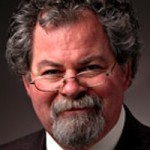Were Early Churches Ruled by Elders or a Single Bishop? Michael J. Kruger Christians have disagreed about what leadership structure the church ought to use. From the bishop-led Anglicans to the informal Brethren churches, there is great diversity.
And one of the fundamental flash points in this debate is the practice of the early church. What form of government did the earliest Christians have? Of course, early Christian polity is a vast and complex subject with many different issues in play. But, I want to focus in upon a narrow one: Were the earliest churches ruled by a plurality of elders or a single bishop?
Now it needs to be noted from the outset that by the end of the second century, most churches were ruled by a single bishop. For whatever set of reasons, monepiscopacy had won the day. Many scholars attribute this development to Ignatius (pictured above).
But, what about earlier? Was there a single-bishop structure in the first and early second century?
The New Testament evidence itself seems to favor a plurality of elders as the standard model. The book of Acts tells us that as the apostles planted churches, they appointed “elders” (from the Greek term ???????????) to oversee them (Acts 11:30; 14:23; 15:2; 20:17). Likewise, Titus is told to “appoint elders in every town” (Titus 1:5).
A very similar word, ???,??o??? (“bishop” or “overseer”), is used in other contexts to describe what appears to be the same ruling office (Phil 1:1; 1 Tim 3:1-7). The overlap between these two terms is evident in Acts 20:28 when Paul, while addressing the Ephesian “elders” (????????????), declares that “The Holy Spirit has made you overseers (??????????).” Thus, the New Testament writings indicate that the office of elder/bishop is functionally one and the same.
But, what about the church after the New Testament? Did they maintain the model of multiple elders? Three quick examples suggest they maintained this structure at least for a little while:
1. At one point, the Didache addresses the issue of church government directly, “And so, elect for yourselves bishops (??????????) and deacons who are worthy of the Lord, gentle men who are not fond of money, who are true and approved” (15.1). It is noteworthy that the author mentions plural bishops—not a single ruling bishop—and that he places these bishops alongside the office of deacon, as Paul himself does (e.g., Phil 1:1; 1 Tim 3:1-13). Thus, as noted above, it appears that the bishops described here are essentially equivalent to the office of “elder.”
2. A letter known as 1 Clement (c.96) also has much to say about early church governance. This letter is attributed to a “Clement”—whose identity remains uncertain—who represents the church in Rome and writes to the church at Corinth to deal with the fallout of a recent turnover in leadership. The author is writing to convince (not command) the Corinthians to reinstate its bishops (elders) who were wrongly deposed. The letter affirms the testimony of the book of Acts when it tells us that the apostles initially appointed “bishops (??????????) and deacons” in the various churches they visited (42.4). After the time of the apostles, bishops were appointed “by other reputable men with the entire church giving its approval” (44.3). This is an echo of the Didache which indicated that bishops were elected by the church.
3. The Shepherd of Hermas (c.150) provides another confirmation of this governance structure in the second century. After Hermas writes down the angelic vision in a book, he is told, “you will read yours in this city, with the presbyters who lead the church” (Vis. 8.3).Here we are told that the church leadership structure is a plurality of “presbyters” (???????????) or elders. The author also uses the term “bishop,” but always in the plural and often alongside the office of deacon (Vis. 13.1; Sim. 104.2).
In sum, the NT texts and texts from the early second century indicate that a plurality of elders was the standard structure in the earliest stages. But, as noted above, the idea of a singular bishop began to dominate by the end of the second century.
What led to this transition? Most scholars argue that it was the heretical battles fought by the church in the second century that led them to turn to key leaders to defend and represent the church.
This transition is described remarkably well by Jerome himself:
The presbyter is the same as the bishop, and before parties had been raised up in religion by the provocations of Satan, the churches were governed by the Senate of the presbyters. But as each one sought to appropriate to himself those whom he had baptized, instead of leading them to Christ, it was appointed that one of the presbyters, elected by his colleagues, should be set over all the others, and have chief supervision over the general well-being of the community. . . Without doubt it is the duty of the presbyters to bear in mind that by the discipline of the Church they are subordinated to him who has been given them as their head, but it is fitting that the bishops, on their side, do not forget that if they are set over the presbyters, it is the result of tradition, and not by the fact of a particular institution by the Lord (Comm. Tit. 1.7).
Jerome’s comments provide a great summary of this debate. While the single-bishop model might have developed for practical reasons, the plurality of elders model seems to go back to the very beginning.
 1 Timothy 2:12 But I suffer not a woman to teach, nor to usurp authority over the man, but to be in silence. 13 For Adam was first formed, then Eve. (KJV)
1 Timothy 2:12 But I suffer not a woman to teach, nor to usurp authority over the man, but to be in silence. 13 For Adam was first formed, then Eve. (KJV)